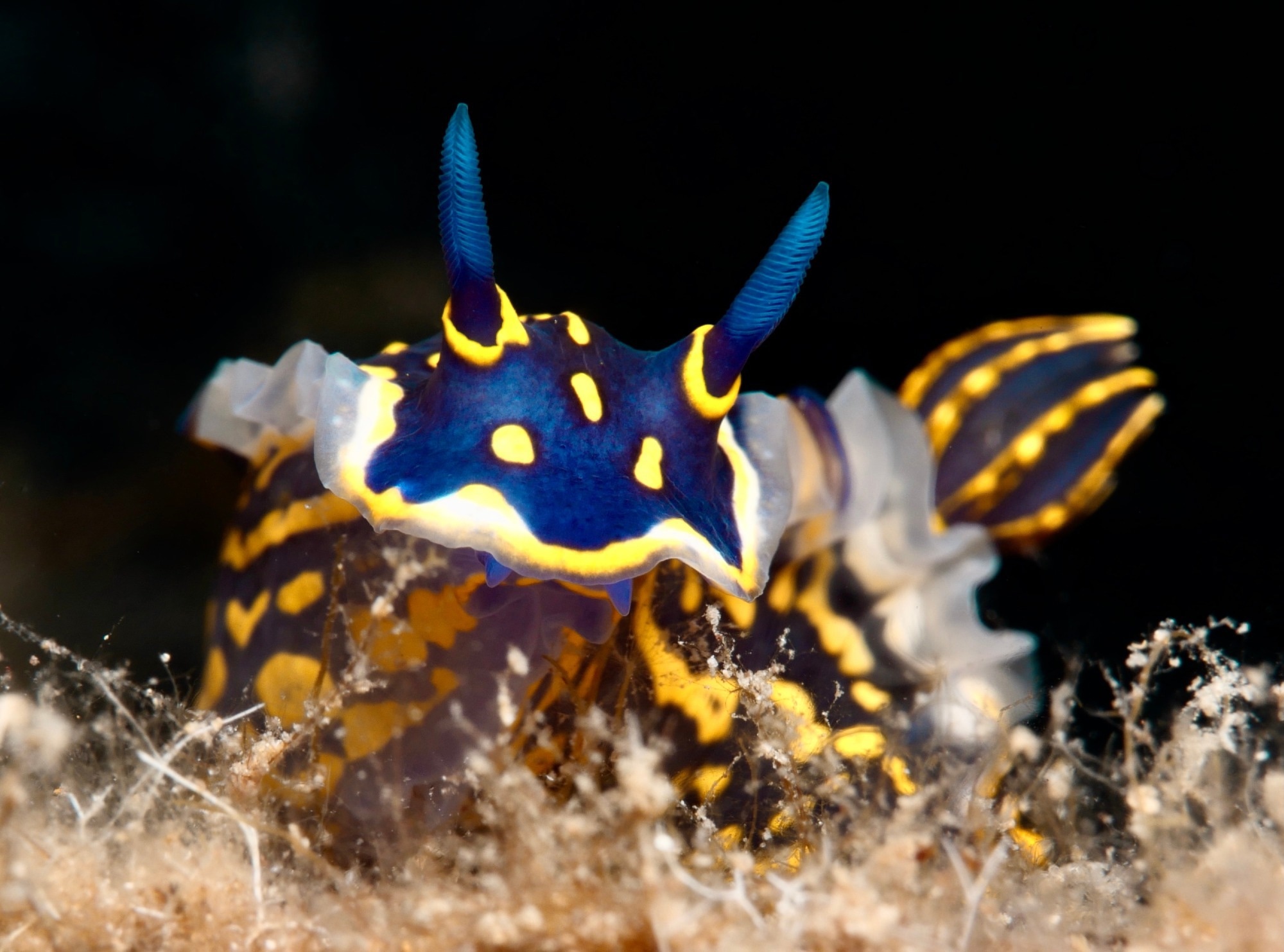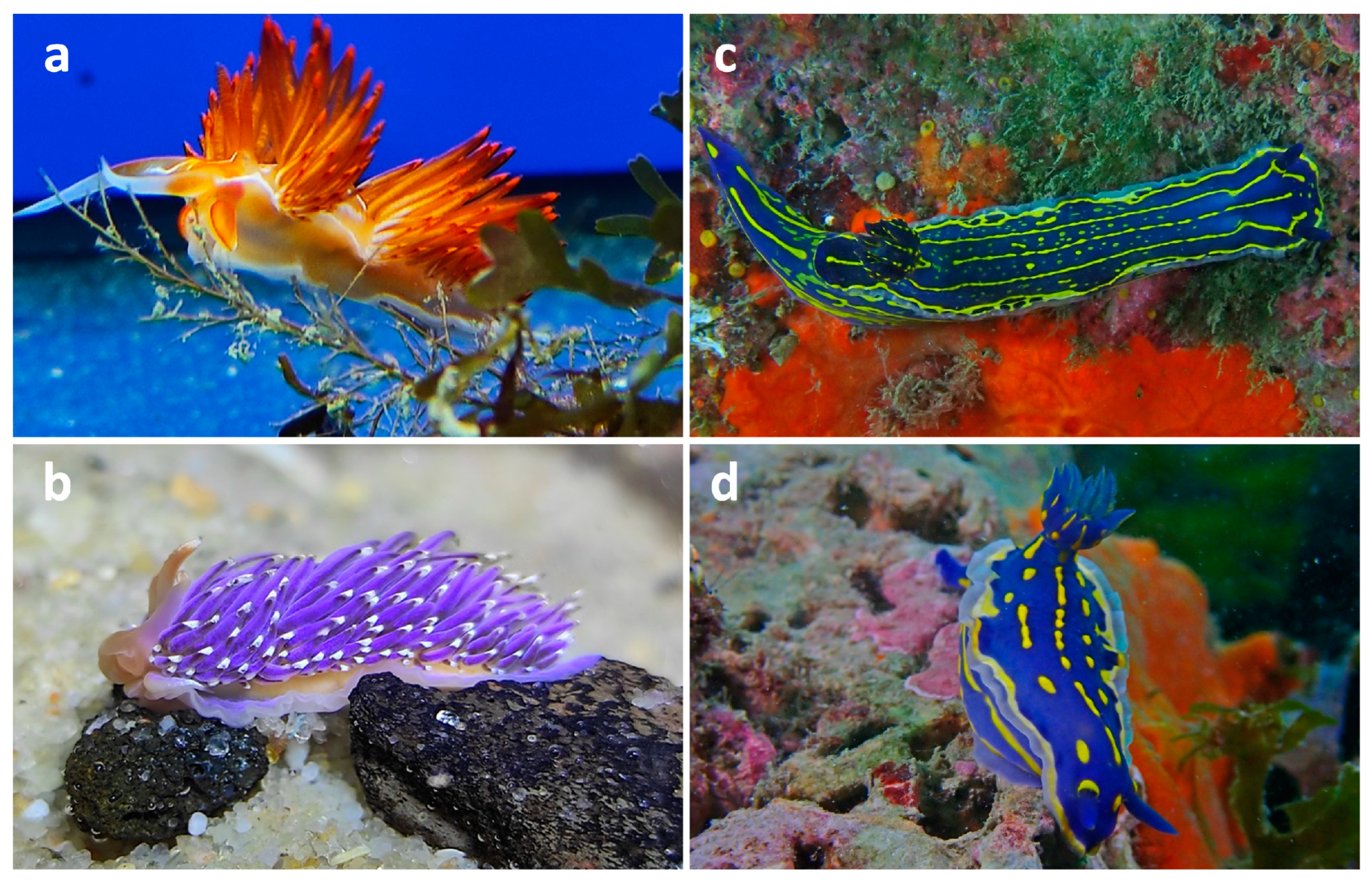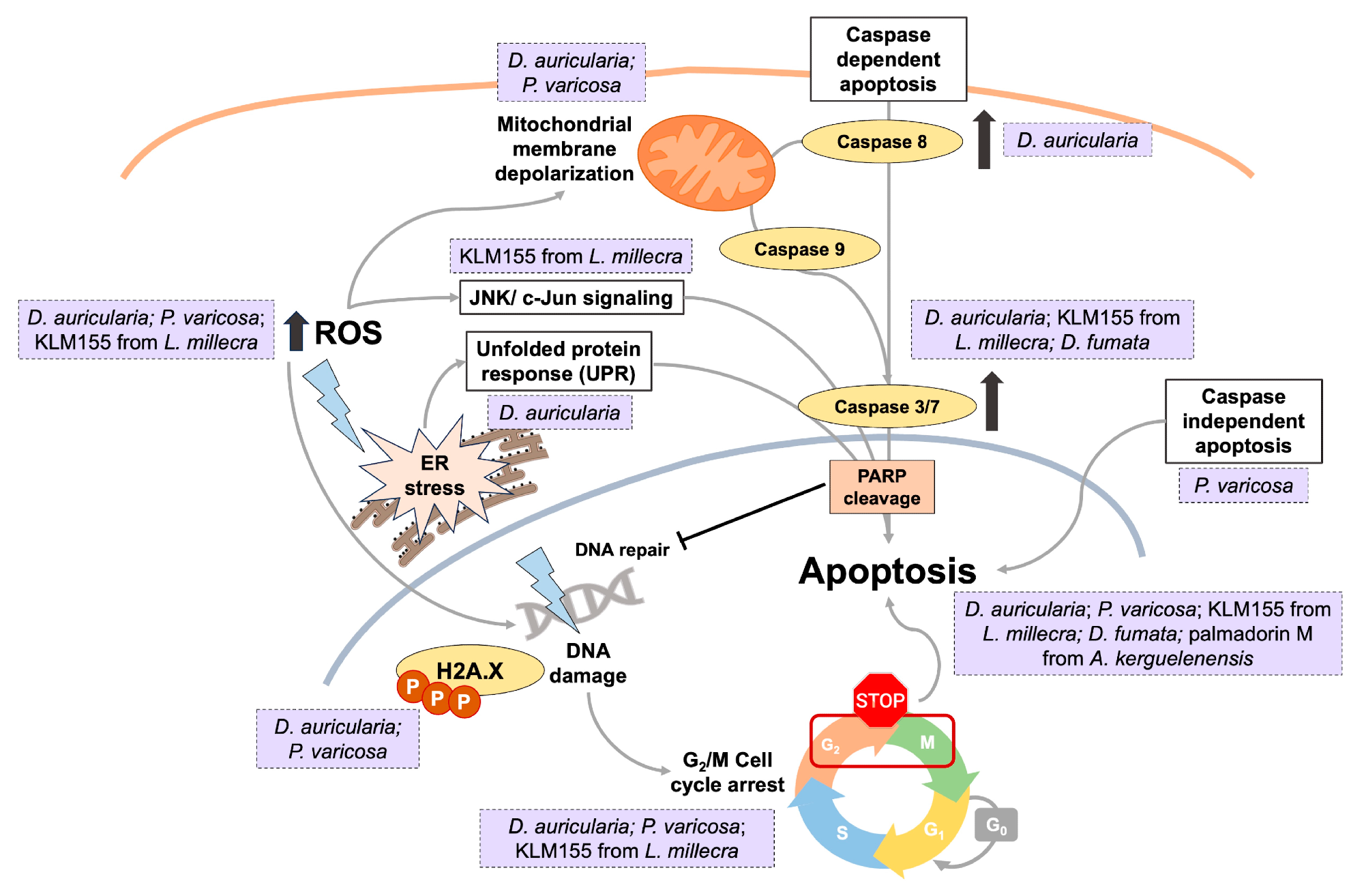Brightly colored sea slugs could hold the key to tomorrow’s cancer treatments, with their diet-derived and self-made chemicals showing potent tumor-killing abilities.
 Review: Nudibranchs as Sources of Marine Natural Products with Antitumor Activity: A Comprehensive Review. Image Credit: Sakis Lazarides / Shutterstock
Review: Nudibranchs as Sources of Marine Natural Products with Antitumor Activity: A Comprehensive Review. Image Credit: Sakis Lazarides / Shutterstock
In a recent study published in the journal Marine Drugs, researchers in Spain reviewed the bioactive potential of nudibranch-derived compounds, with emphasis on their antitumor properties.
Background
Cancer is among the leading causes of mortality and morbidity. In 2022, 20 million cancer diagnoses and 9.7 million cancer-related deaths were recorded. Moreover, 30% of premature deaths in people aged 30–69 were due to cancer. Thus, it is paramount to augment existing treatments or develop novel therapies. The search for new drugs has focused on natural resources, extending to oceans.
Marine organisms have adapted to extreme conditions, resulting in the production of secondary metabolites with high bioactivity. Besides, marine metabolites have more halogen atoms, longer carbon chains, and larger ring systems with fewer oxygen and more nitrogen atoms than terrestrial metabolites.
To date, more than twenty marine-derived drugs have been approved by the U.S. Food and Drug Administration, many for cancer treatment. However, these often face limitations such as drug resistance and a lack of selectivity, underscoring the need for continued bioprospecting. Nudibranchs are a group of marine gastropod mollusks with about 4,700 species.
Due to the lack of an external shell and other physical defenses, nudibranchs have unique chemical defense strategies, involving de novo synthesis of bioactive metabolites or accumulation and modification of toxins and secondary dietary compounds, which are often concentrated in accessible tissues like the mantle or dorsal extensions called cerata.
In the present study, researchers reviewed the potential of nudibranchs as a source of marine natural products with antitumor properties.
Nudibranchs and Their Antitumor Potential
Nudibranchs have emerged as promising candidates for novel pharmacological agents for cancer therapy. Studies have identified numerous secondary metabolites in nudibranchs that exhibit cytotoxic properties, with many showing antitumor potential. Alkaloids and terpenes, primarily diterpenoids and sesquiterpenes, are the major types of bioactive molecules in nudibranchs.
The review notes that many of these compounds are not made by the nudibranchs themselves but are sequestered from their diet, such as sponges, and sometimes chemically modified for their own defense.
A study demonstrated potent cytotoxic effects of methanol-dichloromethane extracts derived from Dolabella auricularia and Phyllidia varicosa against colorectal cancer (CRC) cell lines. Another study reported lower cytotoxic effect of acetone extracts derived from Armina maculata, Armina tricolorata, and Armina tigrina against lung and stomach cancer cell lines.
Acetone extracts from Phyllidia coelestis have been purified to obtain bisabolane-type sesquiterpenoids such as 7-isocyano-7,8-dihydro-α-bisabolene, theonellin isothiocyanate, and 3-isocyanotheonellin. Notably, the paper highlights that structural analogs of these compounds were also found in the nudibranch's sponge prey, Axinissa variabilis, strongly suggesting a dietary origin for these metabolites.
Studies have reported cytotoxicity of 3-isocyanotheonellin against lung, liver, CRC, and pancreatic cancer cell lines, and 7-isocyano-7,8-dihydro-α-bisabolene and theonellin isothiocyanate against one liver cancer cell line only.
Potent isoquinolinequinone alkaloids derived from Jorunna funebris have shown antitumor activity against various cancer cell lines. Examples include fennebricin A against leukemia and lung cancer cell lines, renieramycin M against CRC and lung cancer cell lines, and jorumycin against melanoma, lymphocytic leukemia, and lung cancer cell lines. These compounds belong to a class of aromatic alkaloids characterized by fused quinone and isoquinoline ring systems, often associated with DNA-interactive and pro-apoptotic activity.
In another example of compounds showing activity against hard-to-treat cancers, the paper mentions phorbazole alkaloids from Aldisa andersoni, which demonstrated cytotoxicity against several cell lines known to be resistant to pro-apoptotic stimuli.
Furthermore, tambjamines are the primary metabolites from Tambja brasiliensis and Tambja stegosauriformis. Tambjamine K has demonstrated antitumor activity in glioma and cervical cancer cell lines, though the review notes that some tambjamines also exhibit toxicity against non-tumor cells, highlighting the critical challenge of achieving selectivity.
 Nudibranch morphological groups: cladobranch nudibranchs, including Nemesignis banyulensis (a) and Facelina vicina (b), and dorid nudibranchs, including Felimare picta (c,d).
Nudibranch morphological groups: cladobranch nudibranchs, including Nemesignis banyulensis (a) and Facelina vicina (b), and dorid nudibranchs, including Felimare picta (c,d).
A Reservoir of Defense: The Role of Egg Masses
The review also highlights that the brightly colored and exposed egg masses of some nudibranchs, such as Hexabranchus sanguineus, serve as concentrated reservoirs for defensive compounds. Molecules like ulapualides, isolated from these egg masses, have shown potent antitumor activity and may be easier to isolate in larger quantities compared to extracting them from the adult animals, offering another strategic avenue for drug discovery.
Mechanisms of Action of Nudibranch Derivatives
Research has unveiled several mechanisms of action contributing to the antitumor activity of nudibranch compounds. These include DNA damage induction, oxidative and endoplasmic reticulum (ER) stress, reactive oxygen species (ROS) generation, cell cycle arrest, and apoptosis. A study reported that dendrodoristerol isolated from Dendrodoris fumata exhibits antitumor activity by inducing apoptosis in leukemia cells.
Further, another study showed that palmadorin M isolated from Austrodoris kerguelenensis inhibits the activation of extracellular signal-regulated kinase 1 and 2 (Erk1/2), Janus kinase 2 (Jak2), and signal transducer and activator of transcription 5 (STAT5), inducing apoptosis in leukemia cells. The methanol-dichloromethane extracts from P. varicosa and D. auricularia exhibit antitumor and anti-proliferative effects by inducing DNA damage, oxidative stress, and apoptosis in CRC cell lines.
A subsequent study reported that the D. auricularia extract had selective cytotoxicity against CRC cells and minimal impact on normal colon fibroblasts; the antitumor activity was mediated through the generation of ROS, inducing ER stress and activating unfolded protein response. The ROS-mediated ER stress resulted in G2/M phase cell cycle arrest, DNA damage, and apoptosis.
 Main mechanisms of action of nudibranch-derived molecules and extracts.
Main mechanisms of action of nudibranch-derived molecules and extracts.
In addition, similar mechanisms of action were reported for KLM155, a toluhydroquinone (a hydroquinone derivative) derived from Leminda millecra, in an esophageal cancer cell line. Its antitumor activity was associated with cell cycle arrest in the G2 phase, ROS production, and apoptosis induction. In addition to antitumor activity, various nudibranch derivatives exhibit other biological activities. For instance, A. tigrina, A. tricolorata, and A. maculata extracts exhibit anti-inflammatory activity.
Echinoclerodane A, a diterpenoid from Hexabranchus sanguineus, has potent inhibitory effects on inflammatory responses in RAW264.7 macrophages. Besides, fennebricin A acts as an inhibitor of nuclear factor kappa B (NF-κB) signaling. Nudibranchs have also been recognized for antiparasitic and antimicrobial potential. For example, compounds with leishmanicidal and antibacterial activity have been isolated from Chromodoris willani and Doriprismatica stellata, respectively.
Concluding Remarks
Together, nudibranchs are a group of marine invertebrates with largely underexplored pharmacological and biological potential. The study has highlighted the remarkable antitumor activity of extracts and compounds derived from the limited number of nudibranchs studied to date.
Despite the promising findings, the review emphasizes that further research is needed to corroborate the clinical potential of nudibranch derivatives. More specifically, the paper suggests that future studies should focus not only on standardization of extraction methodologies and optimization of isolation and purification protocols, but also on several key areas. These include exploring the relatively unstudied cladobranch group of nudibranchs, which have different diets and may yield novel compounds; analyzing different anatomical parts of the organisms, such as the mantle versus the viscera; and investigating the microbiome associated with nudibranchs, as their symbiotic bacteria represent another significant source of bioactive molecules.
Journal reference:
- Servillera M, Peña M, Cabeza L, Pula HJ, Prados J, Melguizo C (2025). Nudibranchs as Sources of Marine Natural Products with Antitumor Activity: A Comprehensive Review. Marine Drugs, 23(8), 319. DOI: 10.3390/md23080319, https://www.mdpi.com/1660-3397/23/8/319